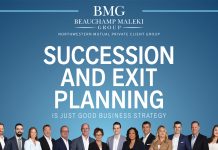
Stakeholders in mature professional practice firms nearing retirement are bombarded with ideas from many advisors for the “best” exit option. Owners should consider these key components for a solid, successful exit plan:
- Create a strong retirement package for exiting owners;
- Find the right buyer with financial strength and skill;
- Build a solid succession plan for key employees; and
- Maintain a “legacy” for the future of the firm.
Legacy can be very important to professional service firm owners—such as engineering, architecture, consulting, accounting or law—as they consider the business their lifework. Finding the best exit solution for stakeholders and owners alike will take a different path than in other industries.
Typical Exit Options
Stakeholders in manufacturing, technology, medical and other industries face similar dilemmas as they near retirement, but they have other, more viable options due to their business models and a supply of willing buyers eager to invest.
There are three typical exit options a business owner may be advised to take:
- Sale of the company to a strategic buyer;
- Sale of the company to a financial buyer; or
- Sale to a closely held group of key employees (management buy-out).
Industry statistics reveal that historically, professional practice firms have not been great candidates for the above options due to buyer/seller cultural mismatch, difficulty realizing economic synergies, a lack of contracts to ensure both key employees and clients will stay post-acquisition, and fear that the legacy of the firm will be tarnished by new owners.
ESOP as an Ideal Exit Option
A popular alternative with exiting owners is to sell their company to an employee stock ownership plan (ESOP). An ESOP is initiated when a legal entity, a Trust, is formed to hold the stock for the benefit of the employee base. It utilizes the resources of the company’s own balance sheet to fund either a partial or full buy-out from the exiting shareholder. This gives the owner the desired liquidity from a “ready market” (the ESOP) to a buyer who, through certain financing alternatives, can back the purchase of stock for the exiting shareholder. Further, the legacy of the firm stays with the people who have helped build it—the employees. Finally, should an owner wish to retain control of the business or simply continue with the operations, the ESOP provides a structure that allows him/her to step back based on a timeframe under his/her control.
Summary
An exiting shareholder has worked a lifetime to build a company that is often the most significant asset in his/her investment portfolio. Not all exit strategies are feasible for firm owners, often due to a buyer/seller cultural mismatch, lack of financial funds, among other factors. The ESOP is an attractive exit solution, and often not considered due to a lack of understanding.
Learn more about exit planning and other valuation insights from VRC.




